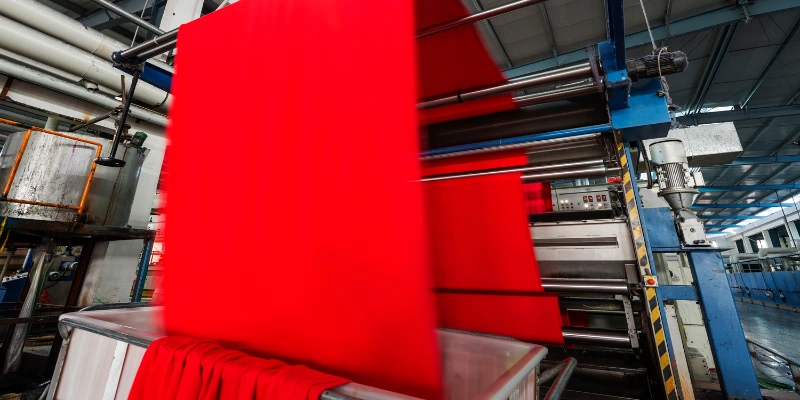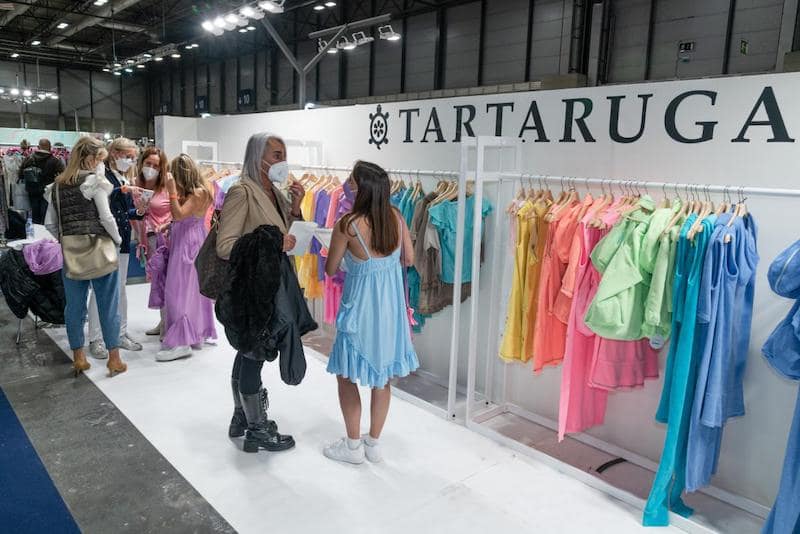What would today’s society be without fabrics? It is clothes that keep us warm and give us all a sense of security, well-being, comfort and expression. With this, it can be said that the textile industry is one of the most important sectors in the country — not only in social terms, but also in economic terms.
Americana, a municipality in the micro-region of Campinas that has the largest textile industry center in the country, contributes significantly to this scenario. The city is made up of more than 600 companies and produces around R$ 4 billion annually, with 31% of its companies focused on chemical fibers.
Do you want to know more about Americana’s textile hub? So, stay with us and learn about the history of the center, the main companies in the region, among other information you need to know about it!
History of Americana’s Textile Pole
Americana’s textile history began in 1866, with the arrival of the North American, Confederate Colonel William Hutchinson Norris in the lands called Santa Bárbara. Norris stayed close to Ribeirão Quilombo and began planting cotton. The land was fertile and showed great ability in farming, so the plantation became a reference in the area in a short time, drawing the attention of other Americans committed to planting cotton, known as white gold.
The year 1875 was very important for the small village that emerged. The inauguration of the Companhia Paulista Railway Station would contribute to the distribution of cotton and watermelon cultivation throughout the state of São Paulo and would reinforce the autonomy of Villa dos Americanos de Santa Bárbara.
The second moment of great importance occurred three kilometers from that place, with the inauguration of the first Textile Industry in Carioba, created by the brothers Antônio and Augusto Souza de Queiroz and the American William Pultney Raltson. In 1884 the factory was bought by the Englishmen Jorge and Clement, who also owned the farm in Salto Grande, but the factory was closed in 1896 because of the debts acquired by the brothers after the abolition of slavery.
The factory was closed for around six months until it was bought at an auction in 1901 by Commander Fraz Muller. The Muller family moved to Villa Americana the next year, giving a new direction to weaving and a new economic direction to the small village. New work strategies and technology were introduced, the working village increased to be able to house its collaborators, most of whom were Italian immigrants.

Around 1904, under the command of Rawlison Muller and Co., the fabric company became the second most important in the country. The Carioba neighborhood was the first in Brazil to receive basic sanitation and asphalt, even before Villa Americana.
In 1907, the waterwheel gave way to a hydroelectric power plant, which became responsible for supplying energy both to the factory and to some nearby towns. Carioba was made up of four large fabric companies and remained prosperous in the hands of the Hermann Muller children until 1940, when the family had to sell the facilities to JJ Abdalla because of the persecution of the Germans on Brazilian soil, during the World War. Carioba ended its activities in 1976.
In 1921, Cícero Jones and Hans Schweizer took the first looms to Americana to create the drought. There were 12 looms brought from Switzerland and set up in a shed on Rua 30 de Julho. Jones and Schweizer were the first in the fabric business in the central Villa Americana area and the first to create silk, contributing to the industry’s variety. After Jones’ death, the industry did not produce for two years before being sold to the brothers Giuseppe and Bertoldo.
In the 1930s, textile factories began to expand. With the prospect of improving family income, many industry employees ventured to buy up to two looms and manufacture at home. The activity grew significantly from 1940 onwards, motivated by the reduced cost of fabric production, with the large-scale insertion of artificial yarns (nylon and viscose) created by Fibra SA, the main exporter and producer of these yarns in Latin America. Villa Americana became known as the largest fabric production center in Latin America during this period.
The advance of the textile sector in the fabric sector in Americana drew the attention of other large companies to its territory, such as Polyeka SA Indústria Química e Têxtil, in 1972. The organization innovated the industrial park with the introduction of synthetic threads, that is, the polyester. In the following years, it would arrive at the company of Fabrics Tatuapé, of the Santista Group, another important organization in the sector that still remains firm today. In this way, the Americana hub concentrated all the large companies in the fabric sector in its territory, eliminating the purchase of inputs outside the municipality.
In the 60s, the Americana Industrial Fair took place, the first fabric fair to take place in the state of São Paulo. So, it was the city with the greatest importance in the textile sector, but it was necessary to create an event capable of prospecting the industrial park in the municipality at a national level.

The success of the event was so great that it became an entity to promote the industry and local products. The place was the birthplace for other important social events. In 2017, the Fashion Cultural and Scientific Center was created, a place aimed at researching new trends in the textile sector and specific events for entrepreneurs, in partnership with the Arena Bureaux Group. In this sense, it is important to highlight that the Fashion Center is an information point for fabric companies looking for innovation and diversity in their pieces.
An overview of the industry today
With the serious Brazilian economic crisis that has occurred in recent years, the textile sector has undergone a major decline, which has bankrupted several entrepreneurs and weakened renowned businesses. However, there has been a considerable recovery since 2018 and the trend is that the sector will soon consolidate itself even in the international market.
The Americana region, formed by the municipalities of Americana, Hortolândia, Nova Odessa, Santa Bárbara d’Oeste and Sumaré, is known today as the largest center of the textile industry in Brazil. It is also one of the main places where artificial and synthetic fibers are produced in Latin America.
Those responsible for the beginning of this great story are the Italian immigrants who populated the area in the 19th century and formed a large working class. In a short time, weaving became the main economic activity in the region (since it predominates until the present time), along with the food and chemical sectors.
Main companies in the region
Among the textile industries located in the Americana hub are:
- Textile Vicuna;
- Santista;
- Tabacow;
- Invest;
- Unitika;
- Toyobo.
Representing the food and chemical sector, the place is home to names such as:
- Del Valle (beverages);
- White Martins;
- Goodyear;
- Metalúrgica Nova American;
- Ripasa;
- stay;
- Nardini;
- American Carrier.
location and capacity
The location, close to the capital São Paulo and regions of large industrial production (such as ABC Paulista), makes Americana’s textile hub one of the most important in the country. The investment of large families of farmers and coffee growers in businesses in the region, forming different partnerships, is another point that favors local development.
Currently, the area has the capacity to produce almost 150 million linear meters of fabric per month, and the industries work with dyeing, printing, spinning and weaving. The specialties are artificial and synthetic fibers, used primarily in women’s fashion and home decor.

The Economy of Americana’s Textile Sector
Americana’s textile hub is of great importance for the Brazilian economy, as it concentrates 32% of the textile companies installed in the country and 27% of those focused on clothing.
There has also been an attraction of new organizations. This happens through business management courses , improvement and training of labor in the textile area — most of the time offered by Sebrae/SP.
Through these training courses, entrepreneurs learn to identify opportunities for improvement in their businesses and plan their day-to-day operations at companies. As a result, it is possible to see an increase in productivity and revenue, in addition to the economic and social development of the cities involved, based on the generation of employment and income.
Thus, it was necessary for companies to reorganize and restructure, some went bankrupt, left the market and part of the workplaces were excluded. Organizations that remained in the market had to end waste and look for replacement technologies in order to achieve greater economic efficiency.
It should be noted that the estimates for the textile sector in 2020 are for growth of up to 2%. And that goes for Americana, as it is one of the most important places for the country’s economy. In this way, it is expected that the sector will develop and new companies will be built.
The international relations of the place
China is the biggest competitor to the growth of Americana’s textile hub. The problem is not competitiveness , but the large Brazilian tax burden. There is also the high cost of raw materials.
In 2011, in the Dilma Rousseff government, the so-called specific taxation took place, characterized by the collection of each sector. The measure aims to reduce taxation for items from certain sectors in the long term.
In the case of the textile industry, the rates are now charged through “ad rem”, with a fixed amount for each specified unit. Some examples that enter into this system are ironing and fabric dyeing.
Following the logic of the Pareto Optimum, which performs analyzes in a ratio of 80 to 20, the Brazilian market should be supplied by only 20% of imported products by 2020 (compared to the 80% of domestic items that are growing in exploration).
Even with these difficulties, Americana’s textile center has stood out as a good exporter, mainly of chemical fibers, to Latin America.

The specialties and challenges faced
In addition to different fabrics , the main specialties of Americana’s textile center are artificial and synthetic fibers, also called chemical fibers. They can be divided into textiles and apparel.
Textile fibers cover the following materials:
yarn and sewing thread: cotton, nylon, wool, spool, silk and metallic;
fabrics: acrylic, leather, elastane, felt, gauze, wool, mesh, sweatshirt, Oxford, feather, polyester, lace, silk, knitting, velvet, voile, among others;
knits: marcerized, cold, combed and cacharrel.
As for the confections, they include the alternatives below:
home line: curtains, sheets, pillowcases, towels, rugs, upholstery, etc.;
clothing: pants, shirts, underwear and shoes.
Finally, the main challenges of Americana’s textile hub are to maintain and enable the growth of industries after the years of crisis . It is necessary to look for innovations in its products as a means of expanding sales, not only internally, but also externally.
Seeking to export not only to Latin America, but to countries in North America, Europe, Africa and Asia, is an alternative to the Brazilian tax system. However, increasing representation abroad by strengthening ties with members of international relations is always a good choice, whether in terms of exports or in terms of credits.
Therefore, the Americana hub consists of a group of companies located in the São Paulo Metropolitan Region. They were the first and main fabric factories in the country, concentrating from the creation of threads to the manufacture of garments. Currently, Americana is undergoing consolidation in the market, since sometimes the branch requires innovations and transformations to improve its processes, so the region is adapting to conquer and increase its consumer public.
Did you like to find out why Americana’s textile center is so important for the national economy? So, take the opportunity to like our Facebook page and learn much more!



















